Why Is It Important to Learn Trading Terms?
If you want to trade in the stock markets, you need to understand the rules of the game. These trading terms will act as a pathway towards your wealth creation journey. It will not only help you improve your vocabulary but also help you understand the stock markets better. Knowing these basic terms will help you make right trading decisions. So, without wasting any more time let us start with the first step and understand common trading terms used in the stock markets. Recommended Watch1. A share and Stock
A share is a small unit of a company. When you buy a share you become a shareholder of a company. A Stock is a collection of shares of a company or multiple companies. Check out our YouTube video on what are shares?2. Day Trading
Day trading is the practice of buying and selling a share before the market closes. It is also known as intraday trading. For example, if you buy a stock in the morning, then sell it for a profit in the afternoon, you have day traded. Find the best strategy for intraday here.3. Buy or Long
Buy option is used to buy a share from your trading terminal. As a trader, you generally buy shares when you analyse that a stock has potential to rise. When you buy a share, you are going long.4. Sell
Sell option is used to sell the shares you currently own in your Demat account for profit. As a trader, you generally sell shares when your target price is achieved and you decide to book profits.5. Short Sell
Short selling is the act of selling stocks that you do not currently own. Usually this is done when you hope that the stock price will decrease and you can close the trade later by buying the share for profit. It is also known as shorting of a share.6. Short Covering
Short covering is closing a short position. In this trade, first you buy the same quantity of shares you had shorted earlier to cover the position.7. Bid Price
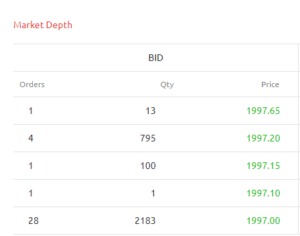 Bid price is the highest price that a buyer is willing to pay to purchase a particular share.
Bid price is the highest price that a buyer is willing to pay to purchase a particular share.
8. Ask Price
 Ask price is the price at which the seller is willing to sell a particular share. It is also known as offer price.
Ask price is the price at which the seller is willing to sell a particular share. It is also known as offer price.
9. Bid-Ask Spread
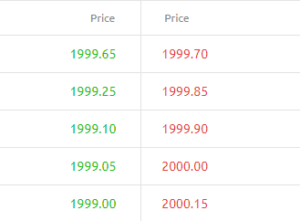 The difference between the price at which someone is willing to buy shares and the price someone is willing to sell shares is called spread.
The difference between the price at which someone is willing to buy shares and the price someone is willing to sell shares is called spread.
10. Target Price
A target price is a price at which the trade has to be closed for profit. If you are placing a bracket order, you can enter your buy price and target price easily in a trade.11. Bullish
If you are bullish on a stock, it simply means you are assuming the share prices will rise . While trading this duration can be days, weeks, or even minutes.12. Bearish
If you are bearish on a stock, you are assuming that the share prices will fall.13. Limit Order
A limit order is a type of order where a predetermined price is set to buy or sell a share. So, even if the price of a share is Rs 100 currently, you can set a limit order to buy it at Rs 95. When the share price touches Rs 95, your order would be executed.14. Market Order
Market order type helps you buy a share at the current market price. So, if the share price is Rs 100 and you place a market order. The order will be executed at the current price of the share.15. Stop Loss
A stop loss is where a trader can limit his losses by exiting the trade if the stock moves against your expectation. A stop loss can save you from heavy losses if the price of a share rises or falls suddenly.16. Cover Order (CO)
Cover order is one of the types of orders where you can buy or sell with a stop loss while placing the trade.17. Bracket Order (BO)
Bracket order is a 3 in 1 order where you can place a trade with a target price and a stop loss. Read more about types of stock market orders here.18. Upper circuit
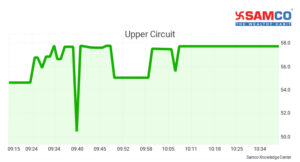 An upper circuit is the maximum price up to which a stock is allowed to move in the upward direction on a trading day. For example, if the price of a stock is Rs 100, it can move upward by a maximum of 20% in a single trading day
An upper circuit is the maximum price up to which a stock is allowed to move in the upward direction on a trading day. For example, if the price of a stock is Rs 100, it can move upward by a maximum of 20% in a single trading day
19. Lower circuit
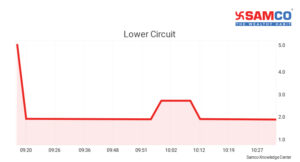 A lower circuit is the opposite of an upper circuit. A lower circuit is the minimum price to which a stock is allowed to fall in a single trading day.
A lower circuit is the opposite of an upper circuit. A lower circuit is the minimum price to which a stock is allowed to fall in a single trading day.
20. Volatility
Volatility refers to the fluctuation in the prices of the stock. The stocks that have steady movements are known as less volatile stocks. If a stock that rises and falls frequently, it is known as volatile stock. A volatile stock can provide great profit opportunities, but also come with greater risk.21. Volume
Volumes indicate how many shares are bought and sold in a trading day. Higher the volume, the more actively traded is the share. A higher volume also indicates that the stock is more liquid and traders are constantly buying and selling it.22. Liquidity
Liquidity of a stock refers to the ability to be bought and sold quickly. If there are lots of buyers and sellers the stock will have high liquidity. A highly liquid stock helps you enter and exit a trade easily.23. Support Level
 Support level of a stock is the price at which the demand of a share is strong enough. Because of high demand, the prices of shares do not fall.
Support level of a stock is the price at which the demand of a share is strong enough. Because of high demand, the prices of shares do not fall.
24. Resistance Level
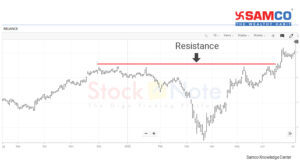 A resistance level is the price at which most traders will sell their share. Due to high supply, the prices of shares might decline.
A resistance level is the price at which most traders will sell their share. Due to high supply, the prices of shares might decline.
25. Leverage
Leverage means borrowing capital to take a bigger position in a share. Leverage is a great way to boost profits. But is also known as a double edged sword. It can help you earn higher gains, but can also result in massive losses. Recommended reading: All about Samco’s CashPlus.26. 52 - Week Low
The 52-week low for a stock represents the lowest closing price of the stock over a 52-week period. Many investors use 52 week highs and lows as a factor in determining a stock's current value and analyse the future price movements.27. 52 - Week Highs
A 52-week high is the highest price that a stock has traded over last 52-week period (a year).28. OHLC or Open, High, Low, Close
Open and close are the prices at which a stock began and ended trading on a particular day. High and low refer to the maximum and minimum prices the stock has touched in a trading day.29. Gap up
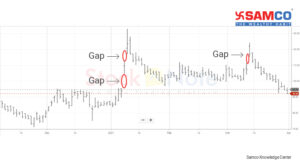 A gap up is when a stock opens at a higher level from the previous day’s high. For example, if the previous day's high was Rs 100 and the stock opened at Rs 102 and is moving upwards. This is considered as a bullish signal of a stock.
A gap up is when a stock opens at a higher level from the previous day’s high. For example, if the previous day's high was Rs 100 and the stock opened at Rs 102 and is moving upwards. This is considered as a bullish signal of a stock.
30. Gap down
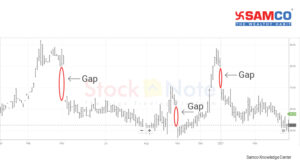 A gap down is when a stock opens at a lower level from the previous day low. For example, if the previous day low was Rs 90 and the stock opened at Rs 88 is a gap down opening. This is considered as a bearish signal on a stock.
A gap down is when a stock opens at a lower level from the previous day low. For example, if the previous day low was Rs 90 and the stock opened at Rs 88 is a gap down opening. This is considered as a bearish signal on a stock.
31. Moving Average
Moving Average is the average price of a share for a specific period of time. This average can be 5 days, 10 days, 30 days, etc.32. Trade Execution
Trade Execution is the completion of a purchase or sale order of a security. If you are using a robust trading platform like Samco App, the trade execution takes place within seconds.33. Stock Quote
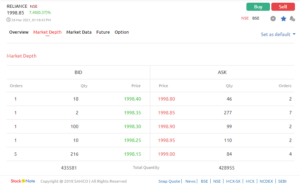 A stock quote provides up to date information about the current market price, ask and bid prices, the high low of a stock, volume, etc. All of this data helps you analyse the movement of a stock better and place profitable trades.
A stock quote provides up to date information about the current market price, ask and bid prices, the high low of a stock, volume, etc. All of this data helps you analyse the movement of a stock better and place profitable trades.
34. Market Trend
Market trend represents the general direction of a share over a period of time.35. Trendline
A trend line is a line that connects two or more price points of a stock pattern. This trendline helps you analyse the future movement of a stock. It also helps you analyse the support and resistance levels of a stock.36. Channels
A channel occurs when the price of a share is moving between two parallel trend lines.37. Channel Pattern
 Channel Pattern is a price movement which utilizes support and resistance to form a channel. At the resistance level the stock will experience supply of share and at the support level, the stock will experience demand. This demand and supply leads to a channel.
Channel Pattern is a price movement which utilizes support and resistance to form a channel. At the resistance level the stock will experience supply of share and at the support level, the stock will experience demand. This demand and supply leads to a channel.
38. Line Charts
 Line charts are the most effortless to read types of charts. These charts simply plot closing prices and give a good understanding of price action over chosen timeframe.
Line charts are the most effortless to read types of charts. These charts simply plot closing prices and give a good understanding of price action over chosen timeframe.
39. Bar Charts
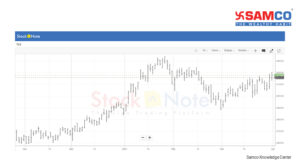 Bar charts provide much more detailed information than a line chart. In this chart all four data points are plotted – Open, High, Low and Close. Bar charts are not visually appealing as compared to candlestick charts.
Bar charts provide much more detailed information than a line chart. In this chart all four data points are plotted – Open, High, Low and Close. Bar charts are not visually appealing as compared to candlestick charts.
40. Candlestick Charts
 Candlestick charts are useful for active day traders. It provides 4 pieces of information - Open, high, low, close and forms bullish and bearish candles on a chart.
To know more on candlestick chart patterns - Click here.
Also, to learn about types of candlestick analysis take a look at our YouTube playlist here.
Candlestick charts are useful for active day traders. It provides 4 pieces of information - Open, high, low, close and forms bullish and bearish candles on a chart.
To know more on candlestick chart patterns - Click here.
Also, to learn about types of candlestick analysis take a look at our YouTube playlist here.


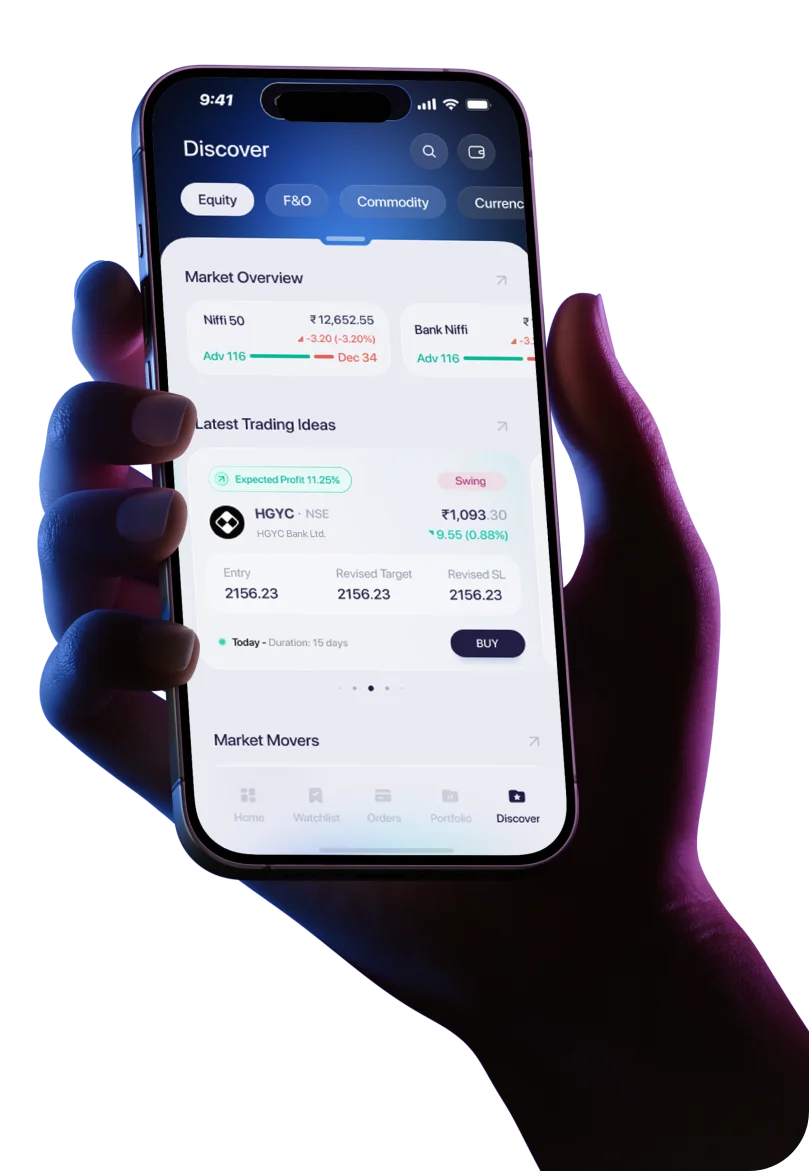
 Easy & quick
Easy & quick
Leave A Comment?